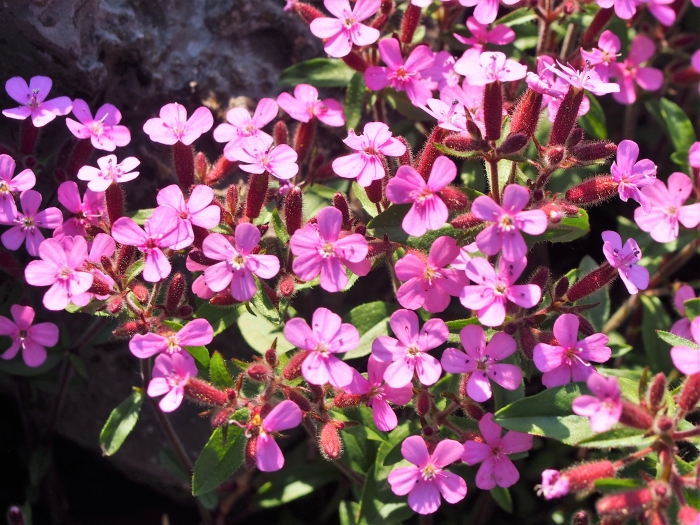Rock Soapwort
(Saponaria ocymoides)
Rock Soapwort (Saponaria ocymoides)
/
/

Agnieszka Kwiecień, Nova
CC BY-SA 4.0












































































Estimated Native Range
Summary
Rock Soapwort is valued for its ability to thrive in poor soils and its use as a ground cover in rock gardens, alpine gardens, and on slopes where erosion control is needed. Its drought tolerance makes it suitable for xeriscaping, and it can also be used to soften the edges of pathways or to spill over walls. It requires minimal maintenance once established, making it a popular choice for gardeners seeking low-care plantings. In cultivation, it prefers full sun but can tolerate part shade, and it adapts to a range of soil types, provided they have good drainage. While it is generally disease-free, it can suffer from root rot in overly wet conditions. Rock Soapwort has been recognized for its ornamental value with the Royal Horticultural Society’s Award of Garden Merit.CC BY-SA 4.0
Plant Description
- Plant Type: Herb
- Height: 0.5-0.8 feet
- Width: 1-2 feet
- Growth Rate: Rapid
- Flower Color: Pink
- Flowering Season: Spring, Summer
- Leaf Retention: Semi-Deciduous
Growth Requirements
- Sun: Full Sun
- Water: Low, Medium
- Drainage: Slow, Medium, Fast
Common Uses
Bee Garden, Bird Garden, Butterfly Garden, Deer Resistant, Drought Tolerant, Fire Resistant, Groundcover, Hummingbird Garden, Low Maintenance, Potted Plant, Rabbit Resistant, Rock Garden, Showy Flowers
Natural Habitat
Rocky slopes and screes in Southern Europe, particularly in the Mediterranean region
Other Names
Common Names: Tumbling Ted, Kleines Seifenkraut, Saponaire Faux-Basilic, Saponaire Rose, Muurzeepkruid, Liten Såpnejlika, Rotes Seifenkraut
Scientific Names: , Saponaria ocymoides, Saponaria ocymoides subsp. alsinoides, Saponaria repens, Silene ocymoides, Bootia ocymoides, Saponaria ocymoides var. gracilior, Saponaria viscosa, Saponaria ocymoides var. alsinoides, Silene alsinoides
GBIF Accepted Name: Saponaria ocymoides L.